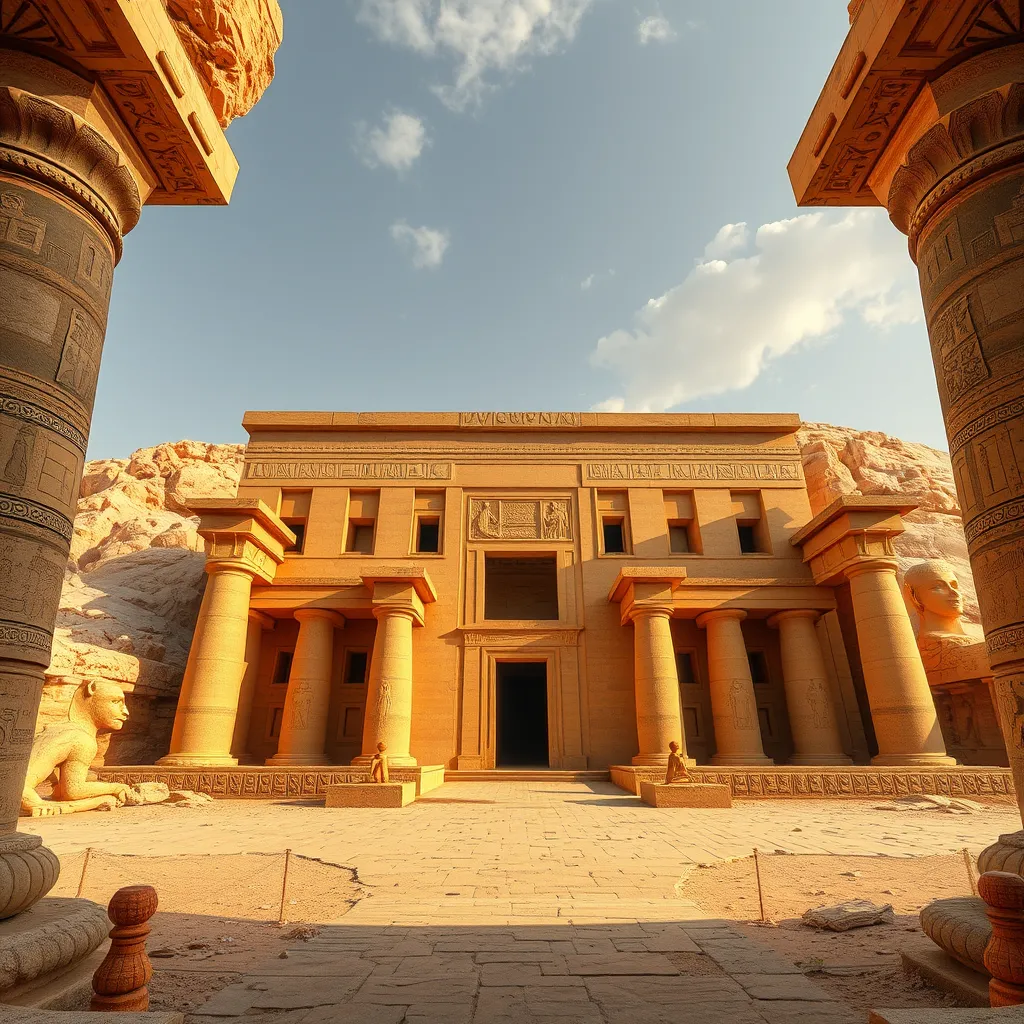The Temple of the Earth: Exploring the Geb Complex
I. Introduction
The Geb Complex, often referred to as the Temple of the Earth, stands as a monumental testament to the ancient civilizations that revered the earth and its fertility. Located in the heart of what was once a thriving cultural hub, this complex has captivated historians and archaeologists alike for centuries.
Its importance transcends mere architecture; it serves as a significant cultural and historical landmark that reflects the values, beliefs, and practices of the societies that worshipped here. This article aims to explore the Geb Complex in detail, examining its historical background, architectural design, cultural significance, artistic contributions, archaeological findings, and current preservation efforts.
II. Historical Background
The origins of the Geb Complex can be traced back to the early dynastic periods of ancient civilization, where it served as a sacred site dedicated to Geb, the Egyptian god of the earth. The temple was constructed during a time when the connection between humanity and nature was paramount, and its establishment marked a significant shift in the way these ancient societies engaged with their environment.
Key figures associated with the Geb Complex include high priests and Pharaohs who performed rituals to honor the earth, ensuring a bountiful harvest and favorable weather. The temple evolved through various dynasties, adapting to the changing political and social landscapes of ancient Egypt.
III. Architectural Design
The architectural design of the Temple of the Earth is as intricate as it is grand. The temple features a large central sanctuary, surrounded by smaller chapels and altars dedicated to various deities associated with agriculture and fertility.
Significant materials used in the construction include:
- Limestone: Known for its durability and ease of carving, limestone was prominently used for the temple’s walls and carvings.
- Granite: Often used for columns and structural supports, granite adds a sense of permanence and strength to the temple.
- Clay: Utilized in the construction of mudbrick structures that complemented the stone architecture.
The symbolism behind the architectural elements is profound. The layout of the temple represents the connection between the heavens and the earth, with high ceilings symbolizing the sky and a solid foundation representing the earth itself.
IV. Cultural Significance
The Temple of the Earth played a pivotal role in ancient rituals and ceremonies. It was a site where farmers would come to seek blessings and perform rites to ensure a successful harvest. The temple was central to agricultural practices, embodying the worship of earth deities who were believed to control the fertility of the land.
The influence of the temple extended beyond its immediate surroundings. It served as a cultural beacon, drawing worshippers from neighboring regions and thus fostering a sense of community and shared identity among various groups.
V. Artistic Contributions
The artistic contributions found within the Geb Complex are remarkable. The walls of the temple are adorned with intricate carvings and colorful frescoes that depict various deities, agricultural scenes, and ritualistic practices.
Analysis of the iconography reveals deep meanings behind the artwork:
- Fertility Symbols: Many images depict plants and animals, symbolizing the fertility of the earth.
- Deity Representations: The presence of gods such as Geb and Osiris highlights the importance of divine intervention in agricultural success.
- Ritual Scenes: Artistic depictions of ceremonies provide insight into the spiritual practices of the time.
These contributions have significantly impacted the broader scope of ancient art, influencing subsequent generations of artists and architects.
VI. Archaeological Discoveries
Major excavations at the Geb Complex have uncovered a wealth of information about its historical context. Artifacts such as pottery, tools, and religious items have been recovered, offering a glimpse into the daily lives of those who inhabited the area.
Recent technological advancements in archaeological methods, such as ground-penetrating radar and 3D modeling, have enhanced our understanding of the complex’s layout and construction techniques. These insights have enriched our knowledge of ancient engineering and architecture.
VII. Current Preservation Efforts
In light of its historical significance, numerous conservation initiatives are underway to preserve the Temple of the Earth. These efforts include:
- Restoration Projects: Ongoing work to restore damaged structures and artworks within the complex.
- Environmental Controls: Implementing measures to protect the site from erosion and weathering.
- Educational Programs: Engaging local communities and visitors in the importance of preservation through workshops and guided tours.
However, challenges remain, such as funding limitations, environmental threats, and the impact of tourism. Local and international organizations play a crucial role in addressing these challenges and ensuring the site is preserved for future generations.
VIII. Conclusion
In summary, the Geb Complex, particularly the Temple of the Earth, stands as a symbol of ancient cultural heritage and spiritual life. Its significance is evident in its historical, architectural, and artistic contributions. The ongoing importance of this site reflects humanity’s enduring connection to the earth and the rituals that celebrate its bounty.
As we continue to explore and understand the complexities of this ancient site, it is imperative to advocate for further exploration and preservation efforts. The Temple of the Earth deserves our attention and respect, ensuring that it remains a source of knowledge and inspiration for generations to come.




